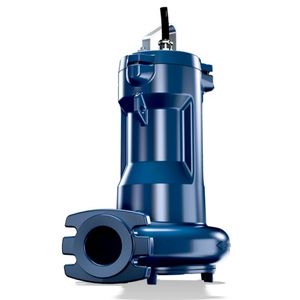A septic tank pump is an essential component in wastewater management systems, particularly in scenarios where gravity alone cannot facilitate the movement of wastewater. Typically, a septic tank pump refers to a submersible electric pump designed to transfer liquid waste, or effluent, from one location to another, often to a higher elevation. This is especially critical when dealing with areas where the final destination of the wastewater is uphill or where natural percolation cannot occur effectively.
How Does a Septic Tank Pump Work?
The operation of a septic tank pump is relatively straightforward but highly efficient. It is equipped with a float switch that activates the pump when the water level within its chamber rises to a predetermined point. Once activated, a small impeller inside the pump begins to rotate, generating the pressure needed to push the effluent through connected pipes to its intended destination. This destination could be a drain field, an elevated percolation area, or even a treatment facility.
Septic tank pumps are submersible, meaning they are installed directly into the wastewater environment. They are designed to withstand prolonged exposure to corrosive and harsh conditions. However, not all septic systems are equipped with a pump, as it is only required in specific circumstances.

When is a Septic Tank Pump Necessary?
A septic tank pump is typically required when wastewater cannot rely solely on gravity for movement. For example, if the drain field or absorption well is positioned at a higher elevation than the septic tank’s outlet, the pump becomes indispensable. Similarly, in properties with limited space or unique landscape features, pumping the effluent is the only feasible solution to ensure proper disposal and treatment.
Another common scenario where this device is required is in systems where the effluent must travel long distances to reach the disposal site. In such cases, the pump ensures a constant flow, preventing blockages or backflow issues that could affect the efficiency of the system.
Installing a Septic Tank Pump
The installation of a septic tank pump can vary depending on the type of septic system and its configuration. In multi-chamber septic tanks, the pump is usually installed in the final chamber, where the effluent has already undergone significant separation from solids. This setup minimizes the risk of solid particles entering the pump and causing blockages.
For single-chamber septic tanks, installing a pump directly in the tank is not recommended. Pumping from a single chamber often results in solids being discharged along with the effluent, leading to potential clogs in the system downstream. In these cases, a separate pumping chamber or station is the preferred solution. This dedicated chamber ensures that only liquid effluent is handled by the pump, preserving its longevity and maintaining system functionality.
Selecting the Right Pump for Your System
Choosing the appropriate septic tank pump is crucial for the system’s performance. Submersible pumps designed for handling wastewater should be capable of managing small solid particles, typically up to 30 millimeters in size. Pumps not suited for this purpose may become clogged, leading to frequent maintenance and potential system failure.
Compact pumping stations are another option for homeowners seeking an all-in-one solution. These pre-assembled units come with a pump, valves, and necessary fittings, simplifying installation and reducing the risk of errors during setup. Additionally, compact stations are designed with ease of maintenance in mind, allowing for quick access to essential components.
Protecting Your Septic Tank Pump
The longevity and efficiency of a septic tank pump depend heavily on preventive measures and regular maintenance. One effective way to protect the pump is by installing effluent filters. These filters, placed at the septic tank’s outlet, trap small solids and debris before they enter the pumping chamber. By doing so, they significantly reduce the risk of clogs and mechanical failures.
Effluent filters are typically installed within a T-shaped fitting beneath an access point, making them easy to remove and clean. Regular cleaning, usually once or twice a year, ensures that the filter remains effective and the pump operates without interruption.
Maintenance and Best Practices
Regular maintenance is key to the effective operation of this device. Homeowners should periodically inspect the pump, check for signs of wear or damage, and ensure that the float switch moves freely. Cleaning the effluent filter, as mentioned earlier, is another essential task.
It is also advisable to have the entire septic system inspected by a professional every few years. During these inspections, technicians can evaluate the condition of the tank, pipes, and pump, addressing any issues before they escalate.
Conclusion
A septic tank pump plays a vital role in ensuring the smooth operation of wastewater management systems, particularly in challenging landscapes or where gravity alone is insufficient. By understanding its function, proper installation techniques, and maintenance requirements, homeowners can maximize the efficiency and lifespan of their septic systems. Whether for pumping effluent to a raised drain field or protecting the environment from untreated waste, this sewage device is an indispensable tool in modern wastewater management.
If you liked our article and want to continue learning about plumbing, I invite you to read our sewage article where you will learn more about this type of system.



0 Comments